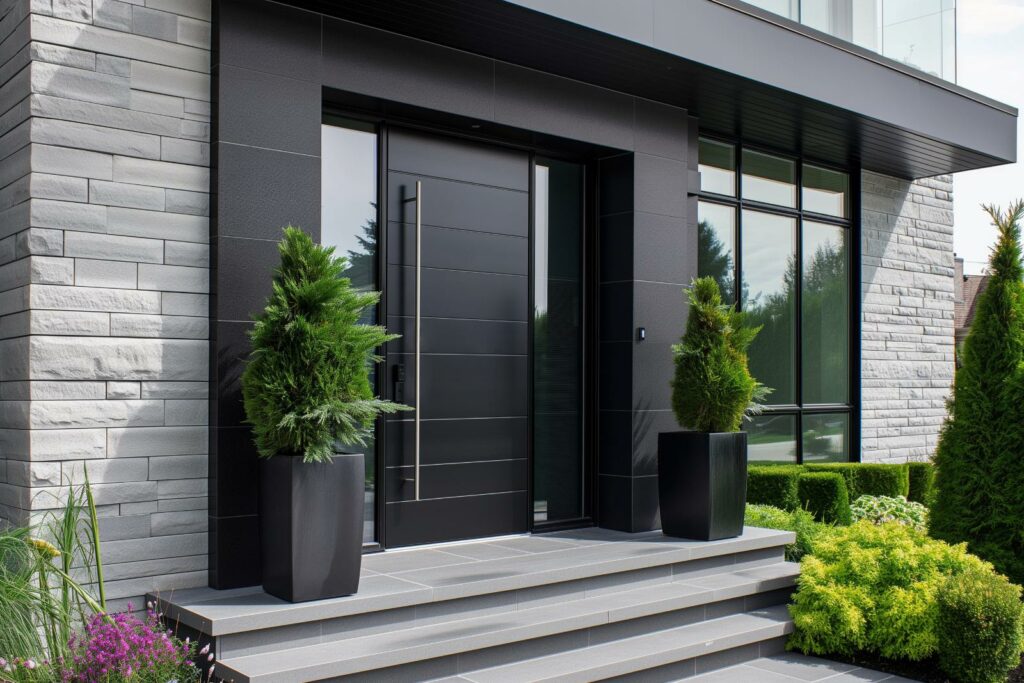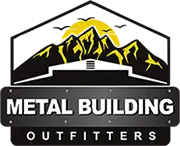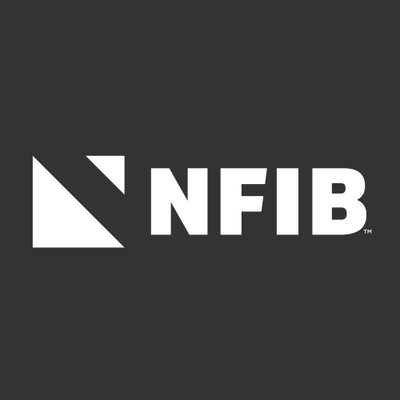
Contents
When constructing cost-effective steel structures, think of yourself as a skilled architect crafting a masterpiece with precision and efficiency. Each decision you make is a brushstroke on a canvas of durability and sustainability. By mastering the art of cost-effective steel building, you open up a world where practicality meets innovation, promising structures that stand the test of time and economic challenges. The journey to creating budget-friendly steel buildings is not just about erecting structures; it’s about sculpting a legacy that endures and inspires.
Key Takeaways
- Opt for standardized steel components for cost reduction.
- Incorporate efficient layout strategies to minimize waste.
- Choose corrosion-resistant materials for durability and longevity.
- Source materials locally to reduce transportation costs.
- Utilize passive design strategies for energy efficiency.
Benefits of Steel Structures
Steel structures offer unparalleled durability and cost-efficiency in construction projects. When considering the benefits of steel structures, one of the most significant advantages is the cost savings they provide. Steel is a highly cost-effective material due to its durability and longevity benefits. Unlike other construction materials, steel doesn’t warp, split, crack, or creep, ensuring that your structure remains strong and stable over time. This longevity translates into lower maintenance costs and reduced need for repairs, saving you money in the long run.
Additionally, steel structures can be erected quickly, further contributing to cost savings. The efficiency of steel construction means that projects are completed faster, reducing labor costs and allowing you to start using your new structure sooner. Steel’s strength-to-weight ratio also means that less material is needed compared to other construction materials, resulting in cost savings both in terms of materials and transportation.
Furthermore, steel structures are highly customizable, allowing you to design a building that meets your specific needs without breaking the bank. Whether you’re constructing a warehouse, office building, or residential home, steel offers a cost-effective solution that doesn’t compromise on quality. In summary, the cost savings and longevity benefits of steel structures make them an excellent choice for any construction project.
Planning Your Steel Building
When planning your steel building, consider the layout and functionality to secure the best use of space and efficiency. Proper planning ensures a smooth construction process and a final structure that meets your needs.
Here are key aspects to focus on:
Site Preparation:
- Evaluate the land where the steel building will be constructed.
- Clear the site of any obstacles or debris that could impede construction.
- Level the ground to provide a stable foundation for the steel structure.
Structural Design:
- Work with an experienced engineer to create a structural design that meets building codes and regulations.
- Consider the intended use of the building to determine the necessary layout and features.
- Optimize the design to maximize space utilization and functionality.
Efficient Space Allocation:
- Plan the interior layout carefully to ensure all areas are utilized effectively.
- Consider future expansion possibilities in the initial design phase.
- Incorporate features like mezzanines or multi-level designs for increased usable space.
Selecting the Right Materials
To ensure the durability and structural integrity of your steel building, the selection of appropriate materials is vital. When choosing materials for your steel structure, consider the importance of corrosion resistance. Opt for corrosion-resistant coatings or stainless steel to secure longevity and reduce maintenance costs over time. These materials protect against rust and deterioration, increasing the lifespan of your building.
In addition to corrosion resistance, it’s essential to assess the environmental impact of the materials you select. Choose eco-friendly options that have minimal environmental consequences during production and disposal. Look for materials with high recycled content or those that can be easily recycled at the end of the building’s life cycle. By prioritizing sustainability in your material selection, you not only contribute to a greener environment but also potentially qualify for green building certifications.
When evaluating materials for your steel structure, weigh the benefits of each option against their potential drawbacks. Consider factors such as cost, durability, and sustainability to make an informed decision that aligns with your project goals. By selecting materials with excellent corrosion resistance and minimal environmental impact, you can build a cost-effective steel structure that meets your needs while promoting long-term sustainability.
Choosing a Trusted Contractor
When choosing a trusted contractor for your steel structure project, make sure to thoroughly check their qualifications and reputation.
Look for evidence of successful past projects and certifications that demonstrate their expertise.
Contractor Qualifications
Before initiating any steel structure project, make sure that the contractor you select has the requisite qualifications and experience to provide a cost-effective and quality outcome.
When choosing a contractor, consider the following:
Contractor Experience and Skills: Confirm the contractor has a proven track record in constructing steel structures and possesses the necessary skills to handle your project efficiently.
Qualifications and Certifications: Verify that the contractor holds relevant certifications and qualifications in steel construction to ensure adherence to industry standards.
Project Portfolio: Review the contractor’s past projects to assess the quality of work and determine if they align with your vision for the upcoming steel structure.
Reputation Check
Ensuring the reputation of a contractor is paramount in selecting a trusted partner for your steel structure project. Reputation assessment involves delving into a contractor’s track record, client testimonials, and project history.
Look for companies with a proven record of delivering high-quality steel structures within budget and on schedule. Seek recommendations from past clients or industry peers to gauge the contractor’s reliability and professionalism.
Additionally, conducting a cost comparison among reputable contractors can help you find the best value for your project. Choose a contractor with a solid reputation for transparency in pricing and a history of completing projects without hidden costs or unexpected expenses.
Prioritize trustworthiness and credibility when making your selection.
Budget-Friendly Design Tips
When aiming for cost-effective steel structures, your focus should be on material selection tips and efficient layout strategies.
By carefully choosing the right materials, you can optimize both performance and budget.
Implementing efficient layout strategies can further enhance the overall affordability and functionality of your steel structure.
Material Selection Tips
To achieve cost-effective steel structures, consider selecting materials that align with your budget without compromising structural integrity. When choosing materials, focus on cost-saving strategies and material efficiency to maximize your budget.
Here are three tips to help you select the right materials for your steel structure:
Utilize Standardized Components: Opt for standardized steel components to reduce manufacturing costs and streamline construction processes.
Explore Recycled Steel: Consider using recycled steel to benefit from cost savings and contribute to sustainable practices.
Strategic Material Sourcing: Source materials locally to minimize transportation costs and support the local economy.
Efficient Layout Strategies
Consider incorporating efficient layout strategies into your steel structure design to optimize space utilization and enhance cost-effectiveness. When planning the layout, prioritize space optimization by strategically placing structural elements to maximize usable area.
Utilize cost-saving techniques such as standardized dimensions and modular designs to minimize material waste and construction time. Implementing efficient layouts can also lead to reduced foundation requirements, further cutting down on expenses.
Additionally, contemplate the functionality and flow of the space to guarantee a practical and efficient design. By carefully considering these factors during the layout planning stage, you can create a cost-effective steel structure that maximizes both space utilization and budget efficiency.
Maximizing Energy Efficiency
For peak energy efficiency in steel structures, prioritize the use of high-performance insulation materials. When maximizing energy efficiency, consider the following key strategies:
Energy-saving techniques:
- Incorporate passive design strategies such as orienting the building to maximize natural light and ventilation.
- Utilize double-glazed windows with low-emissivity coatings to reduce heat loss and gain.
- Implementing reflective roof coatings can also help maintain a comfortable indoor temperature.
Design innovations:
- Opt for cool roofs that reflect more sunlight and absorb less heat than traditional roofs, reducing the need for extra cooling.
- Consider utilizing green roofs or rooftop gardens to improve insulation and reduce the urban heat island effect.
- Additionally, integrating renewable energy sources like solar panels can further enhance the energy efficiency of your steel structure.
Sustainability practices:
- Choose sustainable insulation materials such as cellulose, wool, or recycled fiberglass to minimize environmental impact.
- Ensure proper sealing of doors and windows to prevent air leakage, enhancing the overall energy performance of the building.
- Implementing energy-efficient HVAC systems and lighting fixtures can greatly reduce energy consumption while maintaining a comfortable indoor environment.
Maintenance and Upkeep
When maintaining steel structures, regular inspections and timely repairs are essential to ensure long-term structural integrity and safety. To guarantee long term durability, consider implementing preventative maintenance techniques that can save you costs in the future.
One of the key cost-saving maintenance tips is to schedule routine inspections by professionals who can identify any potential issues early on. These inspections can help in catching problems before they escalate, ultimately saving you from expensive repairs down the line.
Upkeep strategies should also include a proactive approach to addressing any corrosion issues. Implementing protective coatings, such as paint or specialized sealants, can greatly extend the lifespan of your steel structure by preventing rust and corrosion. Additionally, regularly cleaning the structure to remove dirt and debris can help prevent damage and deterioration.
Incorporating a maintenance schedule into your routine can aid in staying on top of any upkeep requirements. This schedule should include tasks such as checking for leaks, inspecting joints and connections, and ensuring that drainage systems are functioning correctly. By following these cost-effective maintenance tips and upkeep strategies, you can prolong the life of your steel structure and maintain its safety and stability for years to come.
Customizing Your Steel Structure
Implementing custom design features on your steel structure enhances its functionality and aesthetic appeal while meeting specific project requirements efficiently. When customizing your steel structure, consider the following:
Customization Options: Explore a variety of customization options, such as adding mezzanine floors for extra space, incorporating unique façade designs for visual appeal, and integrating energy-efficient features like solar panels or green roofs. These options not only enhance the overall look of your steel structure but also provide additional functionality and sustainability.
Cost-Saving Techniques: Opt for pre-engineered steel building kits to streamline the customization process and reduce construction costs. Additionally, consider using recycled steel materials or sourcing materials locally to minimize expenses. Efficient design planning, such as optimizing the layout to reduce material waste and utilizing standard sizes for components, can also contribute to cost savings without compromising the custom features of your steel structure.
Innovative Solutions: Explore innovative customization solutions like modular construction techniques, which allow for faster assembly and cost-effective customization. Incorporating smart technology features, such as automated climate control systems or remote monitoring capabilities, can further enhance the efficiency and functionality of your steel structure while adding a modern touch to the design.
Future Expansion Considerations
Consider future expansion possibilities when customizing your steel structure to ensure scalability and adaptability as your needs evolve. Planning for future expansion is important to make sure that your steel structure can accommodate any growth or changes in requirements. When designing for future expansion, it’s vital to take into account the structural integrity of the building.
To facilitate future expansion, incorporate flexibility into the initial design of your steel structure. Utilize modular construction techniques that allow for easy additions or modifications without compromising the overall stability of the building. Choose a design that can easily integrate new components or sections as needed, minimizing the need for extensive retrofitting or reconstruction.
When thinking about future expansion, consult with experienced engineers or architects to assess the potential impact on the existing structure. They can provide valuable insights into how to expand your steel building while maintaining its structural integrity seamlessly. By carefully planning for future expansion and ensuring the structural integrity of your steel structure, you can create a versatile and cost-effective building that can grow with your needs.
Wrap-Up
Constructing cost-effective steel structures requires strategic planning and careful execution.
By following the outlined steps and incorporating energy-efficient practices, you can create sustainable and durable buildings while keeping costs low.
Remember to prioritize durability, sustainability, and smart design choices to achieve the most cost-effective results for your steel structure project.
Recent Posts
Efficient Construction of Large Metal Warehouses
When it comes to the optimization of building substantial metal storage facilities, one must consider
Why Choose Energy-Efficient Metal Warehouse Construction?
When it comes to selecting the construction method for your warehouse, choosing energy-saving metal construction
What Is the Key to Efficient Metal Warehouse Construction?
When it comes to efficient metal warehouse construction, understanding the key elements that drive success


